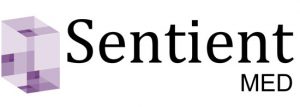 There’s an old adage used in the sphere of computing: ‘garbage in, garbage out’. Essentially, this means that if your input quality is poor, the output derived from that input will also be sub-standard.
There’s an old adage used in the sphere of computing: ‘garbage in, garbage out’. Essentially, this means that if your input quality is poor, the output derived from that input will also be sub-standard.
In today’s age of artificial intelligence (AI) and machine learning, the quality of input is more important than ever. Data, high-quality data, and as many datasets as possible, are required to build the algorithms that teach the computers to “think,” thereby maximizing the enormous power that AI and machine learning can bring to any industry in which they are implemented.
For obvious reasons, there are few fields of greater importance that require a higher standard of vigilance than healthcare. When applying AI and machine learning to healthcare, we simply cannot afford to make mistakes – the repercussions are too great. And that’s where Sentient Synthetics enters the picture.
Sentient is developing synthetic datasets that help overcome the Achilles Heel of machine learning in healthcare: data limitations- providing an affordable, validated solution that also circumvents privacy issues. As such, synthetic datasets will supercharge the creation of AI algorithms- propelling forward the quest to improve healthcare, and cancer in particular.
By utilizing unique machine learning techniques, Sentient can not only extract medical insights from pathology images, but also understand much deeper structural characteristics and generate customizable images that are fully synthetic, but pass the Turing Test- thereby closing the critical data gap. Using these insights, Sentient can simulate biological responses to assess connections between them and the tissue structure: helping to tailor treatments to particular cases.
In the digital pathology world, pathological images provide copious amounts of information. However, in order to use all that available information and ensure the accuracy of its models, Sentient incorporates data from previously unrelated or disregarded sources. For example, when taking a biopsy, hospitals will generally look to glean additional information from it such as genomics, transcriptomics, metabolomics, and proteomics. This information, which can be critical in a diagnosis, is usually neglected by existing digital pathology companies. Essentially, this stems from the fact that it is not simple to connect images and tabular data using standard machine learning and deep learning approaches. By contrast, Sentient’s unique approach allows it to connect these types of data and create better and more accurate decision support systems.
We are fortunate to be living in the Information Age. We do, however, need to sort through all the data we can now access: extracting what is valuable, and making sense of those hidden “needles” in the “haystack.” Sentient Synthetics is using AI and machine learning to sort the “wheat” from the “chaff” of pathological images, creating synthetic datasets that will aid the best and brightest in tackling all forms of cancer.
